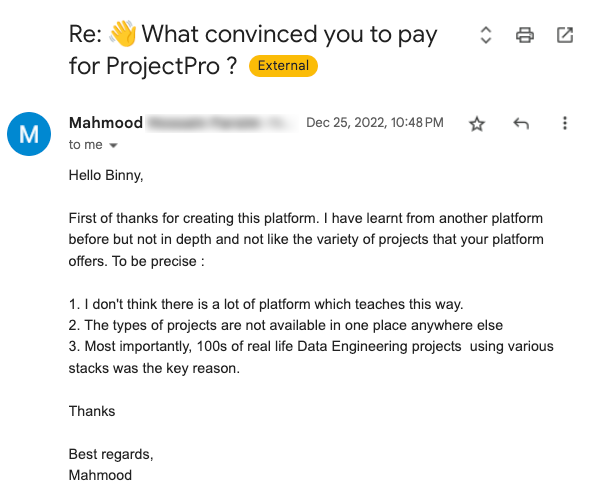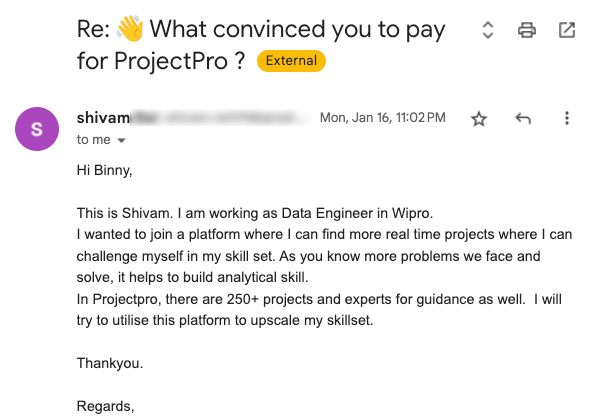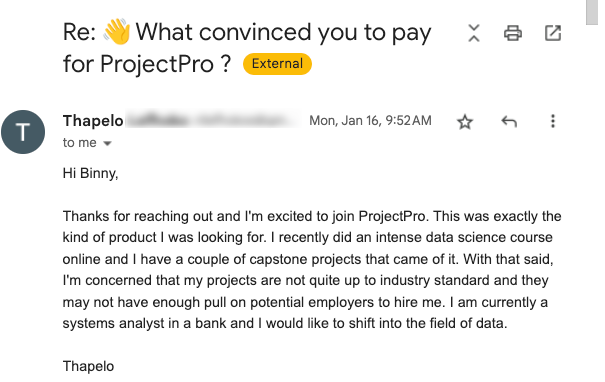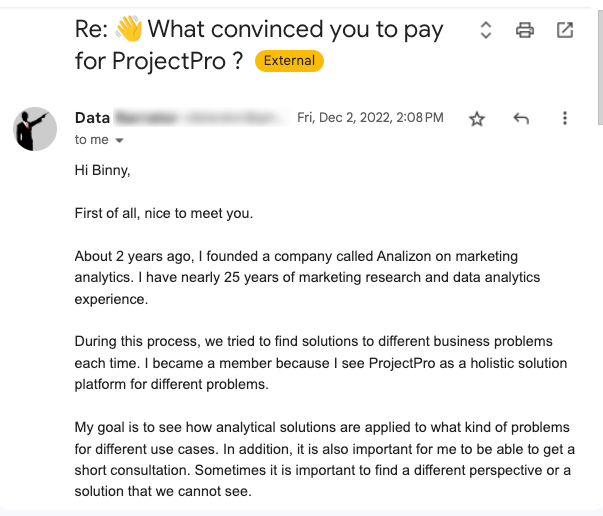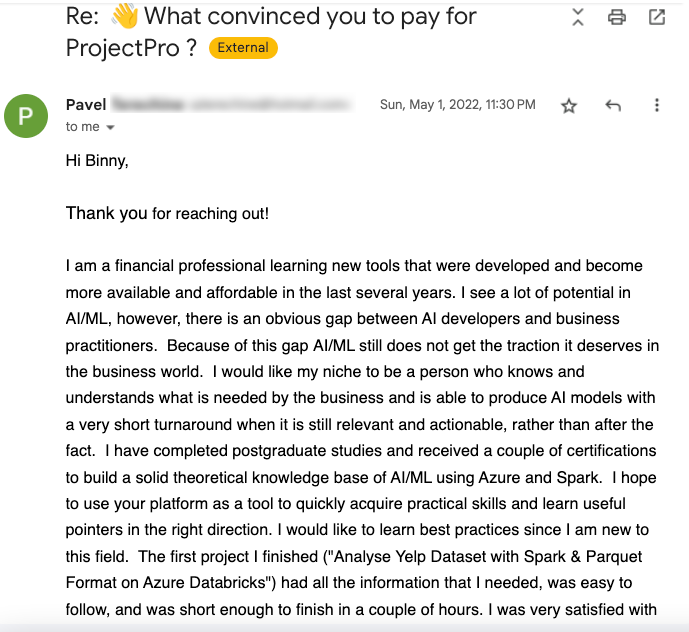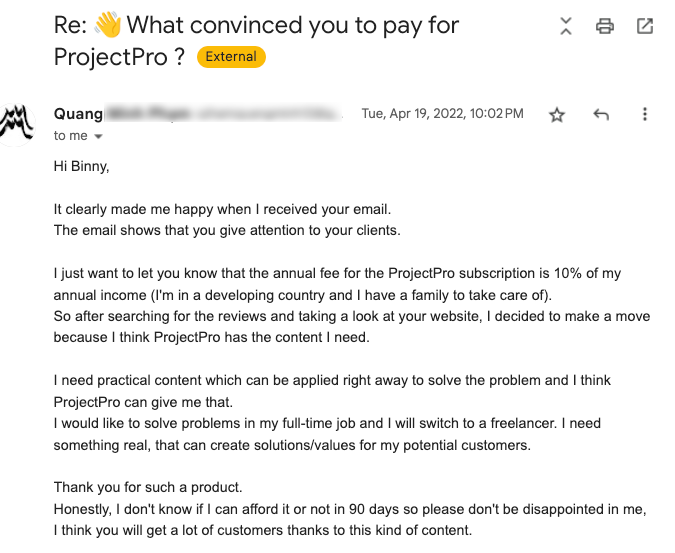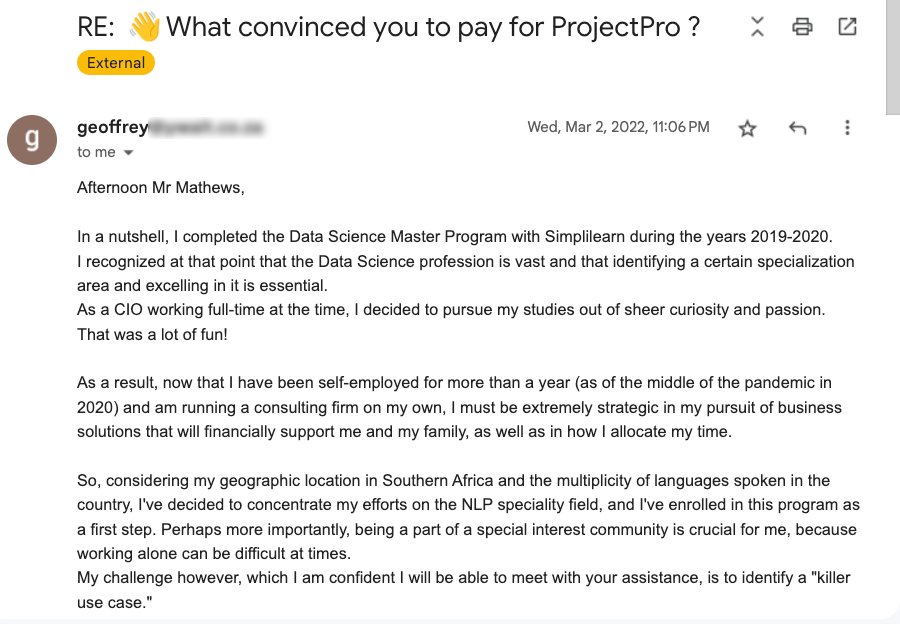
Data Engineer, Microsoft

Senior Applied Scientist, Amazon

University of Economics and Technology, Instructor

Director of Data Science & AnalyticsDirector, ZipRecruiter
In this machine learning and IoT project, we are going to test out the experimental data using various predictive models and train the models and break the energy usage.
Get started today
Request for free demo with us.
Schedule 60-minute live interactive 1-to-1 video sessions with experts.
Unlimited number of sessions with no extra charges. Yes, unlimited!
Give us 72 hours prior notice with a problem statement so we can match you to the right expert.
Schedule recurring sessions, once a week or bi-weekly, or monthly.
If you find a favorite expert, schedule all future sessions with them.
Source: ![]()
Source: ![]()
Source: ![]()
Source: ![]()
Source: ![]()
Source: ![]()
Source: ![]()
Source: ![]()
Source: ![]()
Source: ![]()
Source: ![]()
Source: ![]()
Source: ![]()
250+ end-to-end project solutions
Each project solves a real business problem from start to finish. These projects cover the domains of Data Science, Machine Learning, Data Engineering, Big Data and Cloud.
15 new projects added every month
New projects every month to help you stay updated in the latest tools and tactics.
500,000 lines of code
Each project comes with verified and tested solutions including code, queries, configuration files, and scripts. Download and reuse them.
600+ hours of videos
Each project solves a real business problem from start to finish. These projects cover the domains of Data Science, Machine Learning, Data Engineering, Big Data and Cloud.
Cloud Lab Workspace
New projects every month to help you stay updated in the latest tools and tactics.
Unlimited 1:1 sessions
Each project comes with verified and tested solutions including code, queries, configuration files, and scripts. Download and reuse them.
Technical Support
Chat with our technical experts to solve any issues you face while building your projects.
7 Days risk-free trial
We offer an unconditional 7-day money-back guarantee. Use the product for 7 days and if you don't like it we will make a 100% full refund. No terms or conditions.
Payment Options
0% interest monthly payment schemes available for all countries.
This IoT project presents and discusses data-driven predictive models for the energy use of appliances. Data used include measurements of temperature and humidity sensors from a wireless network, whether from a nearby airport station and recorded energy use of lighting fixtures. The machine learning project discusses data filtering to remove non-predictive parameters and feature ranking. The data set is at 10 min for about 4.5 months. The house temperature and humidity conditions were monitored with a ZigBee wireless sensor network. Each wireless node transmitted the temperature and humidity conditions around 3.3 min. Then, the wireless data was averaged for 10 minutes periods. The energy data was logged every 10 minutes with m-bus energy meters. Weather from the nearest airport weather station (Chievres Airport, Belgium) was downloaded from a public data set from Reliable Prognosis (rp5.ru) and merged together with the experimental data sets using the date and time column. Two random variables have been included in the data set for testing the regression models and to filter out non-predictive attributes (parameters).
Recommended
Projects
How to Learn Cloud Computing Step by Step in 2024?
Wondering how to learn Cloud Computing in 2024! Check out this blog that guides you through the journey to becoming a cloud engineer. | ProjectPro
8 Deep Learning Architectures Data Scientists Must Master
From artificial neural networks to transformers, explore 8 deep learning architectures every data scientist must know.
Data Science vs Data Engineering:Choosing Your Career Path
Data Science vs Data Engineering-Learn key differences, and career tips to seamlessly transition from data engineer to data scientist with ProjectPro
Get a free demo





